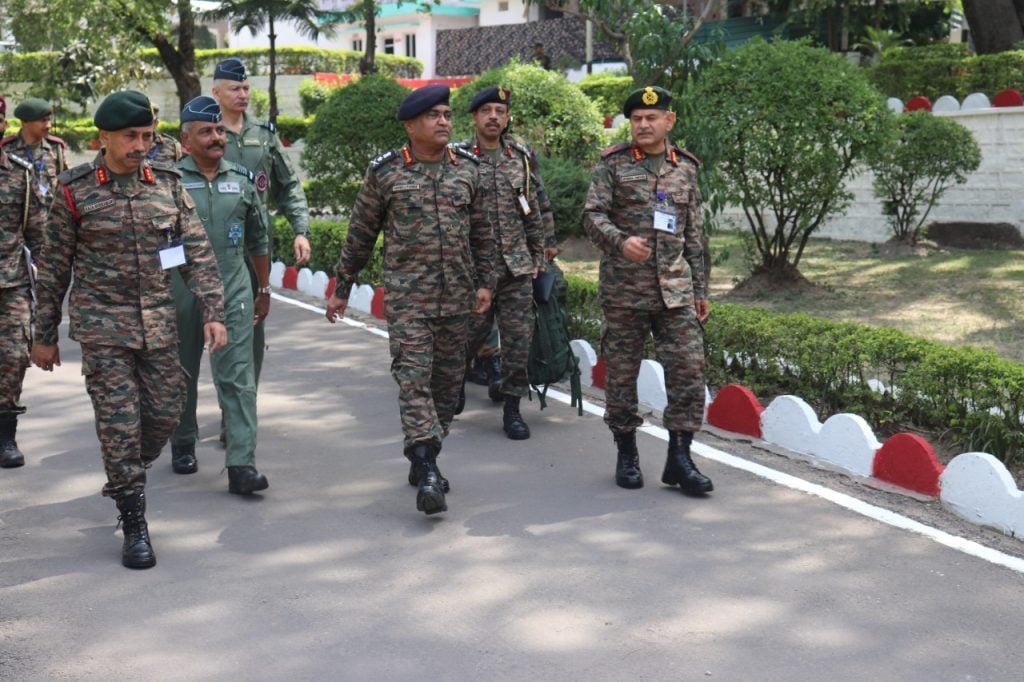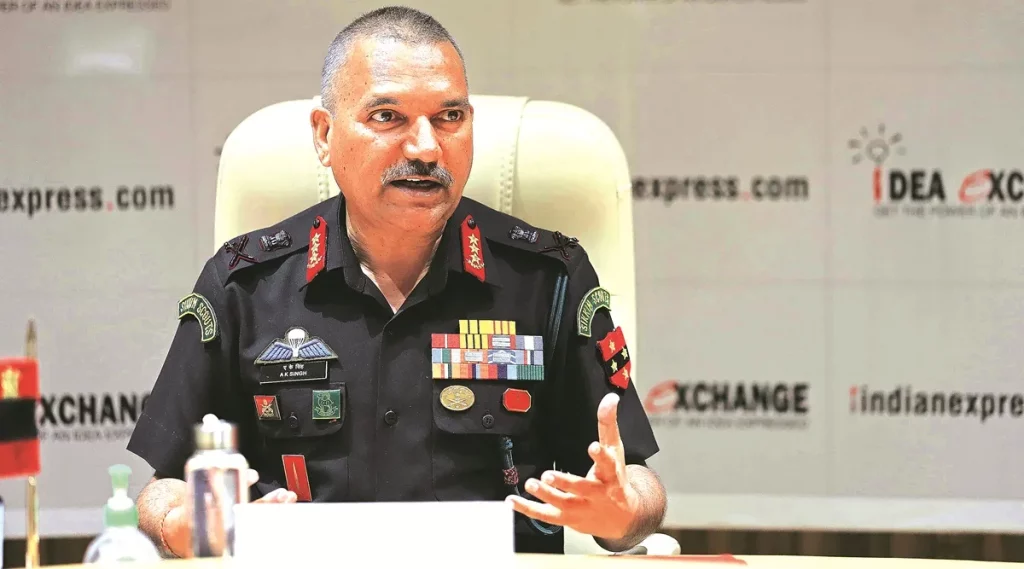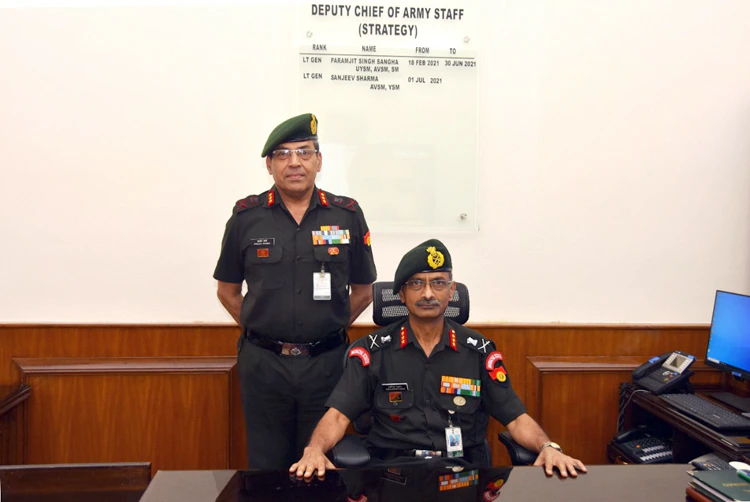Who Will Be The Next Indian Army Chief ?
The next Army Chief will be the public face of the Indian military, responsible for articulating the nation’s strategic objectives and projecting its regional and global influence. The selection of the right individual, with the necessary experience, vision, and diplomatic acumen, will be crucial in reinforcing India’s position as a rising power.

The announcement of the next Indian Army Chief has always been a subject of great anticipation and speculation within the defense community and the public at large. With the recent one-month extension granted to the current Chief, General Manoj Pande, the stage is set for a potentially significant shift in the leadership of the world’s second-largest army.
As the nation eagerly awaits the announcement of the successor, it is crucial to delve into the intricacies of the selection process, the potential candidates, and the challenges the incoming Chief will face.

The Significance of the Generational Shift
The extension granted to General Pande, who was born in May 1962, just months before the India-China war of 1962, holds symbolic significance. The next Army Chief, expected to be announced by the new government around mid-June, will be the first four-star general born after the 1962 conflict. This generational shift is seen as a crucial step in addressing the psychological legacy of that traumatic event, which has cast a long shadow over the Indian military’s psyche.
Putting the 1962 Debacle Behind
While the army has long since exorcised the ghost of the 1962 defeat, the appointment of a post-1962 born Chief is viewed as a symbolic milestone in the institution’s journey to fully move beyond that historical setback. As military affairs expert Lt. Gen. DS Hooda (retd.) points out, “The army exorcised the ghost of that war many years ago and there is no question of the military leadership being haunted by it.” However, the new Chief will still face the enduring China challenge, requiring deft handling and a focus on building robust deterrence capabilities.

Ushering in a New Era
The impending change of guard at the helm of the Indian Army is not merely a routine transition but a generational shift that could usher in a fresh perspective and approach to address the evolving security landscape. The incoming Chief, unencumbered by the psychological baggage of the 1962 debacle, will have the opportunity to chart a new course for the army, leveraging the experiences and insights of their predecessors while infusing the organization with a renewed sense of purpose and adaptability.
The Succession Conundrum
The extension granted to General Pande has added an element of unpredictability to the process of appointing the next Army Chief, complicating the succession plan that was widely anticipated to follow the seniority principle.
Seniority Principle in Flux
Traditionally, the government has followed the seniority principle in appointing service chiefs, though there have been rare instances of senior-most officers being overlooked. The recent appointments of Gen. Bipin Rawat as Army Chief in 2016 and Admiral Robin Dhowan as Navy Chief in 2014 are examples where the seniority norm was set aside.
Expanding the Selection Canvas
The decision to grant General Pande a one-month extension has sparked speculation that the government may be looking to expand the canvas of the selection process beyond the strict adherence to seniority. South Block insiders suggest that the government may want to take a final call on the selection of the next Army Chief, potentially considering a seniority-cum-merit approach.
The Contenders and the Complications
Until the announcement of General Pande’s extension, it was widely anticipated that Lt. Gen. Upendra Dwivedi, the current Army Vice-Chief and the seniormost officer after Pande, would be named the successor.

However, with Dwivedi and Southern Army Commander Lt. Gen. Ajai Kumar Singh both set to retire on June 30, the government’s decision has complicated the succession plan.

Other potential contenders for the top job include Northern Army Commander Lt. Gen. M.V. Suchindra Kumar, Central Army Commander Lt. Gen. N.S. Raja Subramani, and Integrated Defense Staff Chief Lt. Gen. J.P. Mathew.

The delay in the announcement has fueled speculation, as it departs from the government’s past practice of naming the new service chief two to three months in advance.

Challenges Awaiting the Next Army Chief
Irrespective of who is chosen as the next Army Chief, the incoming leader will face a daunting set of challenges that will test their strategic acumen and leadership skills.

Navigating the China Conundrum
The ongoing military standoff with China in the eastern Ladakh region, which has entered its fifth year, will be a top priority for the new Chief. Restoring the status quo ante along the Line of Actual Control (LAC) and strengthening India’s deterrence capabilities against the backdrop of China’s assertive posturing will be crucial.
Driving Jointmanship and Integration
The implementation of the long-awaited theatre command system, a key aspect of the military’s modernization and integration efforts, will demand the new Chief’s attention and decisive leadership. Fostering greater synergy among the three services will be essential in enhancing the armed forces’ operational effectiveness.
Evaluating the Agniveer Scheme
The contentious Agniveer recruitment scheme, which has faced criticism and resistance within the army, will also require the next Chief’s review and potential adjustments. Balancing the need for modernization and force restructuring with the concerns of the rank and file will be a delicate challenge.
Shaping the Army’s Future
Beyond the immediate operational and organizational challenges, the incoming Chief will be tasked with charting the long-term strategic vision for the Indian Army. This will involve modernizing the force, embracing technological advancements, and ensuring the army remains a formidable deterrent in the face of evolving security threats.
The Significance of the Selection Process
The appointment of the next Indian Army Chief holds immense significance, not only for the defense establishment but also for the broader geopolitical landscape. The decision-making process and the choice of the successor will be closely watched, both domestically and internationally.
Upholding Institutional Integrity
The manner in which the government navigates the selection process will be scrutinized for its adherence to principles of meritocracy, transparency, and institutional integrity. Any departure from the established norms or perceived political interference could undermine the army’s reputation and morale.
Projecting India’s Strategic Posture
The next Army Chief will be the public face of the Indian military, responsible for articulating the nation’s strategic objectives and projecting its regional and global influence. The selection of the right individual, with the necessary experience, vision, and diplomatic acumen, will be crucial in reinforcing India’s position as a rising power.
Shaping the Future of the Indian Army
The incoming Chief will have a pivotal role in shaping the future trajectory of the Indian Army, guiding its modernization, force restructuring, and technological transformation. Their decisions and leadership will have far-reaching implications for the army’s operational readiness, combat effectiveness, and ability to address emerging security challenges.

Conclusion
The impending announcement of the next Indian Army Chief has generated a palpable sense of anticipation and speculation within the defense community and the public at large. The extension granted to the current Chief, General Manoj Pande, has added an element of unpredictability to the succession process, potentially signaling a shift in the government’s approach to the selection of service chiefs.
As the nation eagerly awaits the naming of the successor, the focus will be on the individual’s ability to navigate the complex security landscape, drive the military’s modernization and integration efforts, and inspire the rank and file with a bold vision for the future. The incoming Chief will be tasked with addressing the enduring China challenge, fostering greater jointmanship among the services, and evaluating the contentious Agniveer scheme.
Ultimately, the selection of the next Indian Army Chief will have far-reaching implications, not only for the defense establishment but also for the country’s strategic posture and global standing. The government’s decision-making process and the choice of the successor will be closely scrutinized, with the expectation that the new leader will uphold the army’s institutional integrity, project India’s strength and resolve, and shape the future of the world’s second-largest military force.
List of Chief of Army Staff (CoAS)
| List of Indian Army Generals – Indian Army Chiefs | ||||
| S.No. | Name | Rank | Tenure | Unit of Commission |
| 1 | General Sir Robert Lockhart | Commander-in-Chief | 15 Aug 1947 to 31st Dec 1947 | 51 Sikhs Frontier Force |
| 2 | General Francis Robert Roy Bucher | Commander-in-Chief | 21 June 1948 – 15 January 1949 | Scottish Rifles |
| 3 | Field Marshal Kodandera Madappa Cariappa | Commander-in-Chief | 16 January 1949 – 14 January 1953 | Rajput Rifles |
| 4 | General Maharaj Rajendrasinhji Jadeja | Commander-in-Chief | 15 January 1953 – 1 April 1955 | 2nd Lancers (Gardner’s Horse) |
| 5 | General Maharaj Rajendrasinhji Jadeja | Chief of Army Staff | 1 April 1955 – 14 May 1955 | 2nd Lancers (Gardner’s Horse) |
| 6 | General Satyawant Mallana Sringesh | Chief of Army Staff | 15 May 1955 – 7 May 1957 | 19th Hyderabad Regiment |
| 7 | General Kodandera Subayya Thimayya | Chief of Army Staff | 8 May 1957 – 7 May 1961 | 19th Hyderabad Regiment |
| 8 | General Pran Nath Thapar | Chief of Army Staff | 8 May 1961 – 19 November 1962 | 1st Punjab Regiment |
| 9 | General Jayanto Nath Chaudhuri | Chief of Army Staff | 20 November 1962 – 7 June 1966 | 7th Light Cavalry |
| 10 | General Paramasiva Prabhakar Kumaramangalam | Chief of Army Staff | 8 June 1966 – 7 June 1969 | Regiment of Artillery |
| 11 | Field Marshal Sam Hormusji Framji Jamshedji Manekshaw | Chief of Army Staff | 8 June 1969 – 15 January 1973 | 12th Frontier Force Regiment |
| 12 | General Gopal Gurunath Bewoor | Chief of Army Staff | 16 January 1973 – 31 May 1975 | Dogra Regiment |
| 13 | General Tapishwar Narain Raina | Chief of Army Staff | 1 June 1975 – 31 May 1978 | Kumaon Regiment |
| 14 | General Om Prakash Malhotra | Chief of Army Staff | 1 June 1978 – 31 May 1981 | Regiment of Artillery |
| 15 | General Kotikalapudi Venkata Krishna Rao | Chief of Army Staff | 1 June 1981 – 31 July 1983 | Mahar Regiment |
| 16 | General Arun Kumar Shridhar Vaidya | Chief of Army Staff | 1 August 1983 – 31 January 1986 | 9th Deccan Horse |
| 17 | General Krishnaswamy Sundarji | Chief of Army Staff | 1 February 1986 – 31 May 1988 | Mahar Regiment |
| 18 | General Ashwa Nath Sharma | Chief of Army Staff | 1 June 1988 – 30 June 1990 | 16th Light Cavalry |
| 19 | General Sunith Francis Rodrigues | Chief of Army Staff | 1 July 1990 – 30 June 1993 | Regiment of Artillery |
| 20 | General Bipin Chandra Joshi | Chief of Army Staff | 1 July 1993 – 19 November 1994 | 64th Cavalry |
| 21 | General Shankar Roy Chowdhary | Chief of Army Staff | 20 November 1994 – 30 September 1997 | 20th Lancers |
| 22 | General Ved Prakash Malik | Chief of Army Staff | 1 October 1997 – 30 September 2000 | Sikh Light Infantry |
| 23 | General Sundarajan Padmanabhan | Chief of Army Staff | 1 October 2000 – 31 December 2002 | Regiment of Artillery |
| 24 | General Nirmal Chander Vij | Chief of Army Staff | 1 January 2003 – 31 January 2005 | Dogra Regiment |
| 25 | General Joginder Jaswant Singh | Chief of Army Staff | 1 February 2005 – 30 September 2007 | Maratha Light Infantry |
| 26 | General Deepak Kapoor | Chief of Army Staff | 1 October 2007 – 31 March 2010 | Regiment of Artillery |
| 27 | General Vijay Kumar Singh | Chief of Army Staff | 1 April 2010 – 31 May 2012 | Rajput Regiment |
| 28 | General Bikram Singh | Chief of Army Staff | 1 June 2012 – 31 July 2014 | Sikh Light Infantry |
| 29 | General Dalbir Singh Suhag | Chief of Army Staff | 1 August 2014 – 31 December 2016 | 5 Gorkha Rifles |
| 30 | General Bipin Rawat | Chief of Army Staff | 31 December 2016 – 31 December 2019 | 11 Gorkha Rifles |
| 31 | General Manoj Mukund Naravane | Chief of Army Staff | 31 December 2019 – 30 April 2022 | 7 Sikh Light Infantry |
| 32 | General Manoj Pande | Chief of Army Staff | 30 April 2022 – Present | Corps of Engineers |
CoAS Tenure and Benefits
An Army Chief’s tenure lasts either for three years or until the age of 62, depending on which milestone is reached first. They’re rewarded with a handsome salary (set by the 7th pay commission) of Rs 2,50,000 alongside various other perks.
















Add Comment